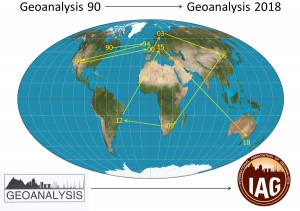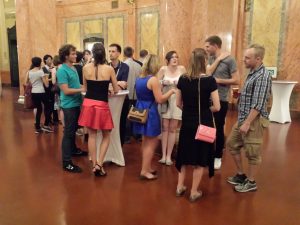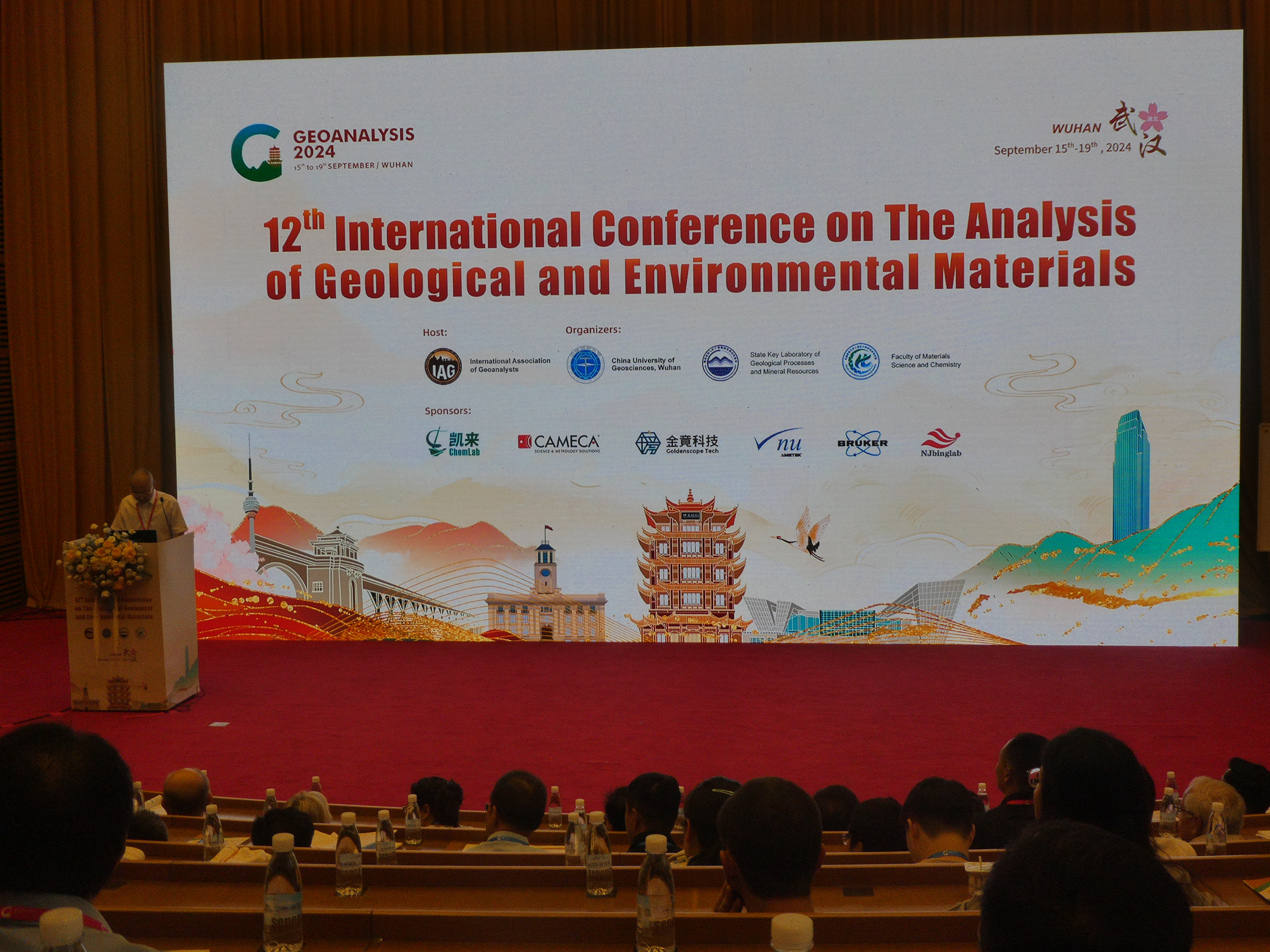 Our successful triennial Geoanalysis conferences are a key part of the IAG’s activities. Indeed, it was the financial as well as the scientific success of Geoanalysis94 held in the UK that year that enabled us to create the IAG.
Our successful triennial Geoanalysis conferences are a key part of the IAG’s activities. Indeed, it was the financial as well as the scientific success of Geoanalysis94 held in the UK that year that enabled us to create the IAG.
 Each Geoanalysis conference is unique, reflecting in part the science and culture of the host country, but all have a common aim: to bring together geoanalytical scientists from all over the world to share the results of the latest research in their field. As well as oral presentations, the conferences put great emphasis on poster sessions to promote networking amongst participants and we especially encourage younger researchers to attend by offering financial support in the form of bursaries and reduced registration fees. There is a vibrant social programme and mid- and post-conference field trips enable participants to explore key geological features of the host country.
Each Geoanalysis conference is unique, reflecting in part the science and culture of the host country, but all have a common aim: to bring together geoanalytical scientists from all over the world to share the results of the latest research in their field. As well as oral presentations, the conferences put great emphasis on poster sessions to promote networking amongst participants and we especially encourage younger researchers to attend by offering financial support in the form of bursaries and reduced registration fees. There is a vibrant social programme and mid- and post-conference field trips enable participants to explore key geological features of the host country.
Future Meetings
We are planning to hold our next Geoanalysis conference in August 2027, in the School of Mines at Colorado University, Golden, USA. When more details are available they will be posted here.
Past Meetings
Geoanalysis 2024

Our 12th Geoanalysis conference was held from 15-19 September 2024 in Wuhan, China in the idyllic grounds of the East Lake Hotel international conference centre with a backdrop of the busy city of Wuhan. The event over 200 experts, scholars, and students from 16 countries, fostering a diverse and international academic exchange.
The scientific programme featured 55 oral presentations and 38 poster contributions, covering five main themes of:
- reference material preparation and applications;
- instrument developments and field analysis;
- sample preparation and bulk analysis;
- microanalysis, mapping, and imaging; and
- characterising planetary, terrestrial and environmental materials.

In addition, delegates had the opportunity to attend two workshops on How reliable is your geochemical data? How do we know? led by Prof Thomas Meisel, and Secondary Ion Mass Spectrometry given by Dr Michael Wiedenbeck. Participants were also invited to visit the laboratory facilities at the State Key Laboratory of Geological Processes and Mineral Resources and the Faculty of Materials Science and Chemistry, which are equipped with cutting-edge analytical instruments.

The conference was opened by Professor Yongsheng Liu, President of Yangtze University and Chair of the Geoanalysis 2024 Organising Committee. Prof. Jianwei Li, President of China University of Geosciences (Wuhan), delivered the welcome speech on behalf of the host institution, expressing warm greetings to all attendees and emphasizing the significance of Geoanalysis as a platform for sharing cutting-edge research in geological and environmental material analysis. Not only was the main lecture theatre well designed and very comfortable, it also contained one of the largest presentation screen many delegates had ever encountered at a scientific conference.
After the scientific sessions on 18th September, the IAG General Meeting was held in the main lecture hall, chaired by Professor Dorrit Jacob, the new IAG President, with members of IAG Council reporting on the status of the IAG’s finances, grants and awards, proficiency testing schemes and its journal Geostandards and Geoanalytical Research. A special IAG medal was awarded to Chris Jackson in recognition of his tireless, friendly and highly efficient work as IAG treasurer since the Association was constituted in 1997.
At the closing ceremony, Prof Jacob and other delegates expressed their appreciation to the Organising Committee for a splendid conference, offering an excellent platform for sharing knowledge, experiences, and ideas. We now look forward to the next triennial IAG gathering, scheduled for August 2027 in Golden, Colorado, USA.
For a longer account of the conference, please see the IAG News Page in Elements (volume 21 issue 1) and the conference website https://geoanalysis2024.aconf.org/ and programme.
- Geoanalysis 2022, Freiber, Saxony, GERMANY
- Geoanalysis 2018, Macquarie University, Sydney, AUSTRALIA
- Geoanalysis 2015, Leoben, AUSTRIA
- Geoanalysis 2012, Buzios, BRAZIL
- Geoanalysis 2009, Kwazulu-Natal, SOUTH AFRICA
- Geoanalysis 2006, Beijing, CHINA
- Geoanalysis 2003, Rovaniami, FINLAND
- Geoanalysis 2000, Pont à Mousson, FRANCE
- Geoanalysis 1997, Vail, Colorado USA
- Geoanalysis 1994, Ambleside, UK
- Geoanalysis 1990, Huntsville, CANADA
